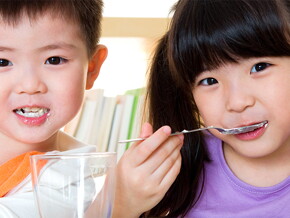
Kids get their genes from their moms and dads. Because of this, traits like hair and eye colour, handedness, blood type and even the presence of dimples are inherited. Did you know that genes and health are related? There are genes that can put a child at risk for diseases like allergies, obesity and diabetes. Some qualities show up depending on gender, the presence of such trait in one or both parents, environmental factors, and other reasons.
For example, a child may become obese later in life if his father is also obese, more so if his mother is a smoker. This risk decreases if only the mom is overweight. However, there is a greater chance for obesity if there is a family history in both parents.
A child’s risk for diabetes also depends on the genes. If either mom or dad had diabetes before turning 50 years old, their child has 14 percent chance of having the disease. The possibility goes down if either parent was diagnosed at a later age. But then again, a family history of diabetes on both sides puts the child at a higher risk.
Another example of genes affecting health is allergies. Allergies develop based on family history. There is up to 50 percent chance for certain allergies to develop if one of the parents has it. This risk zooms up to 80 percent when both parents and their other children, have the condition. The health risks estimated by the screener show that genes and family history play a big role in determining a child’s health. However, that doesn’t mean that we can’t do anything to lower the risk.
Parents can start with lifestyle changes, joining fitness activities, losing weight, and going to regular health checkups. For the child, it is important that he is given a balanced diet. Good feeding habits should be started early childhood. Ensure that the child receives the right kind and amount of protein, carbohydrates, fats and other nutrients. Later in life, these may help minimise the risk for developing conditions such as obesity, diabetes and allergies.
References:
1. Morandi A, Meyre D, Lobbens S, Kleinman K, Kaakinen M, et al. (2012) Estimation of Newborn Risk for Child or Adolescent Obesity: Lessons from Longitudinal Birth Cohorts. PLoS ONE 7(11): e49919. doi:10.1371/journal.pone.0049919
2. American Diabetes Association. Genetics of Diabetes. Available at: http://www.diabetes.org/diabetes-basics/genetics-of-diabetes.html. [Accessed 29 June 2015]
3. Kjellman, JACI 1999.
4. Exl et al Nutrition 2001.
5. Koletzko B, et al. Can infant feeding choices modulate later obesity risk? Am J Clin Nutr 2009;89:1502S-8S.


























